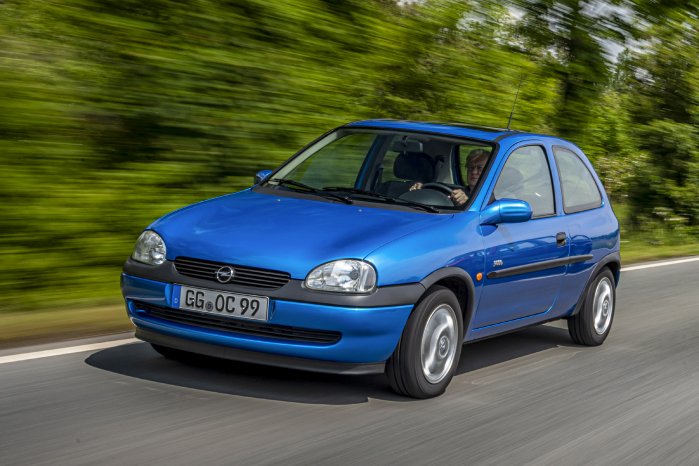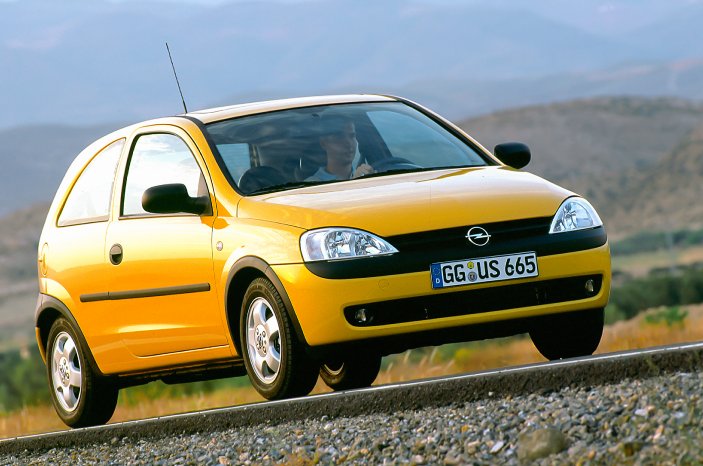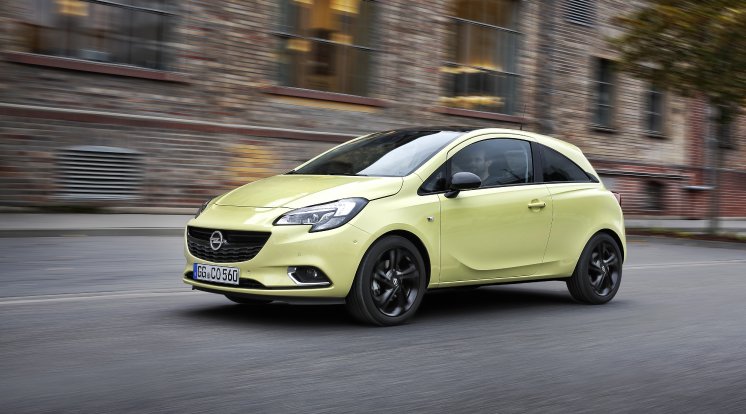- Direct route to multi-million bestseller: over 13.6million Corsas sold in 37 years
- Pioneer: Opel introduces top technologies from higher classes in small car
- Ready for the future: Corsa “Number 6” also with electric version for first time
- World premiere: new Corsa and Corsa-e at the 2019 IAA Frankfurt motor show
Act One: 1982 to 1993
The Corsa A featured close-coupled proportions within a short length of just 3.62 meters. It had bold, flared wheel-arches like a rallye car and an exceptionally low 0.36 drag coefficient which was possibly record-breaking for its class. Chief designer Erhard Schnell had created a sporty small car with crisp, chiseled lines, intended to particularly appeal to ‘the man of the house’. The highlight was the 100 hp Corsa GSi, and diesel power was also introduced. The two-door hatch and notchback line-up was expanded in 1985 with the addition of the popular five-door model. The Corsa A became a highly-acclaimed, top seller with 3.1 million units built.
Act Two: 1993 to 2000
Despite the success of Corsa number 1, the decision was taken in Rüsselsheim to position its successor as a real ‘ladies’ darling’. Opel design legend Hideo Kodama set to work and created a much rounder, softer Corsa, with appealing ‘saucer-eye’ headlamps which perfectly fit with cute, child-like looks. The Corsa B was ten centimeters longer and much more spacious inside than its predecessor. It also introduced higher safety standards to its segment, including ABS cadence braking, side-impact protection and front airbags. For special markets, next to the hatchback Opel again offered a notchback as well as station wagon and pick-up variants. Petrol engines already had fuel-injection technology and catalytic converters, while the GSi featured 16 valves and diesel power was now turbo-charged. The second Corsa was successful around the world, and sales topped the four million mark.
Act Three: 2000 to 2006
In the spirit of never changing a winning team, Hideo Kodama was again asked to design the shape of the Corsa C. The styling was consciously oriented towards its successful predecessor. The Corsa grew again by ten centimeter in length and had a wider stance with a longer wheelbase, which greatly increased interior space. For the first time, the body was fully galvanized. Sophisticated four-valve ECOTEC petrol and new direct-injection turbo diesel engines ensured strong power, low fuel consumption and lowest emission values – all variants already complied to the Euro 4 emission standards. The Corsa C also became a star performer and sold 2.5 million units.
Act Four: 2006 to 2014
From now on, the three and five-door versions go their separate ways: the three-door Corsa has unique, coupé-like styling aimed at sporty customers, just like the original Corsa A. The five-door variant becomes a spacious, fully-fledged family car. The Corsa D was still less than four meters in length, having grown to exactly 3.999 meters. With Opel’s ecoFLEX technology, the Corsa had fuel-saving Start/Stop systems and highly efficient engines. The 1.3 CDTI ecoFLEX version consumed just 3.3 l/100 km over the combined cycle and emitted only 88 g/km CO2. Opel put a very “hot” Corsa on the market in 2011 – the 155kW (210hp) OPC “Nürburgring Edition”. A tap of the accelerator was all it took to launch the “pocket rocket” to top speeds of up to 230km/h. The fourth generation Corsa in all its variants sold over 2.9 million units.
Act Five: 2014 to 2019
Dynamic, practical and stylish, the Corsa E is also a bestseller with around 1.2 million units sold to date. For the first time, the small star tops the four-metre mark, offering high comfort and top technologies over a length of 4.02 metres. Heatable steering wheel, seat heating and automatic climate control are of course on offer, as are the front camera with distance indicator, Traffic Sign Recognition and Lane Keep Assist. Corsa drivers are optimally connected with the Apple CarPlay and Android Auto compatible IntelliLink infotainment systems including a seven-inch colour touchscreen. The small car’s sporty top-of-the-line model is initially the 152kW (207hp) Corsa OPC and later the Corsa GSi with 110kW (150hp).
Act Six: 2019 – electric version introduced
Opel is going full-speed ahead into the future with Corsa “Number 6”. The latest generation of the small car, which will celebrate its world premiere at this year's Frankfurt International Motor Show, is also available as a purely battery-electric version for everyone for the first time. A real highlight is the adaptive glare-free IntelliLux LED® matrix light, which Opel also offers for the first time in the small car segment. In addition, there are numerous state-of-the-art assistance systems such as Forward Collision Alert with Automatic Emergency Braking and pedestrian detection as well as radar-based Adaptive Speed Control, which make driving even safer and more relaxed. With a length of 4.06 metres, the five-seat Corsa’s handling, clear lay-out and practicality remain exemplary. The coupé-like roof line is 48 millimetres lower than its predecessor – without any detriment to headroom. The driver sits 28 millimetres lower. The low centre of gravity benefits driving performance and handling. The new Corsa is more direct and more dynamic – for more fun behind the wheel.






